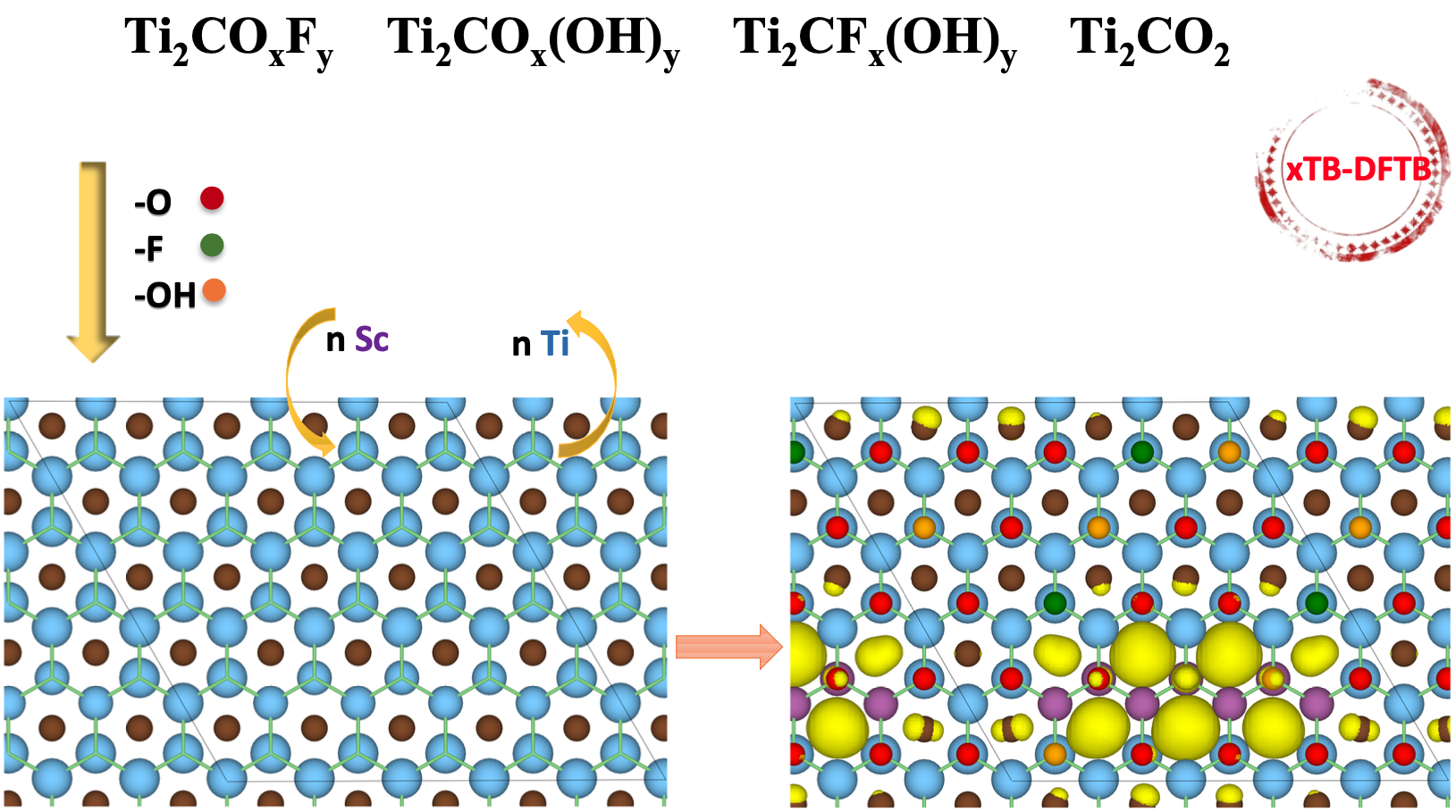Taoufik Sakhraoui and František Karlický published a new paper!
Prediction of induced magnetism in 2D Ti2C based MXene by manipulating the mixed surface functionalization and metal substitution computed by xTB model Hamiltonian of the DFTB method
Link here: https://doi.org/10.1039/D3CP05665A
Abstract:
We employed the recently developed density functional tight binding (DFTB) method’s Hamiltonian, GFN1-xTB, for modeling the mixed termination in Ti2C MXene, namely three types of termination by combining -O and -OH, -O and -F, as well as -F and -OH. We demonstrated that the approach yields reliable predictions for electronic and magnetic properties of such MXenes. The first highlighted result is that the mixed surface functionalization in Ti2CAxBy MXene induces spin polarization with diverse magnetic alignments, including ferromagnetism and two types of antiferromagnetism. We further identified the magnetic alignment for the investigated MXene in terms of the compositions of the terminal groups. Moreover, the effect of the transition metal (Ti) substituted by the Sc atom on the electronic and magnetic properties were also investigated. We found that the studied systems maintain the magnetism and the metallic characteristics. A magnetic transition from antiferromagnetic (AFM) to ferrimagnetic (FiM) ordering was found for ScTi15C8F8(OH)8 and ScTi15C8F12(OH)4 compounds. Finally, we proved that incorporating the Sc atom into the lattice of Ti2CO2 and mixed surface termination Ti2CAxBy is an effective strategy to induce magnetism. Our study may provide a new potential application for designing MXene-based spintronics.

